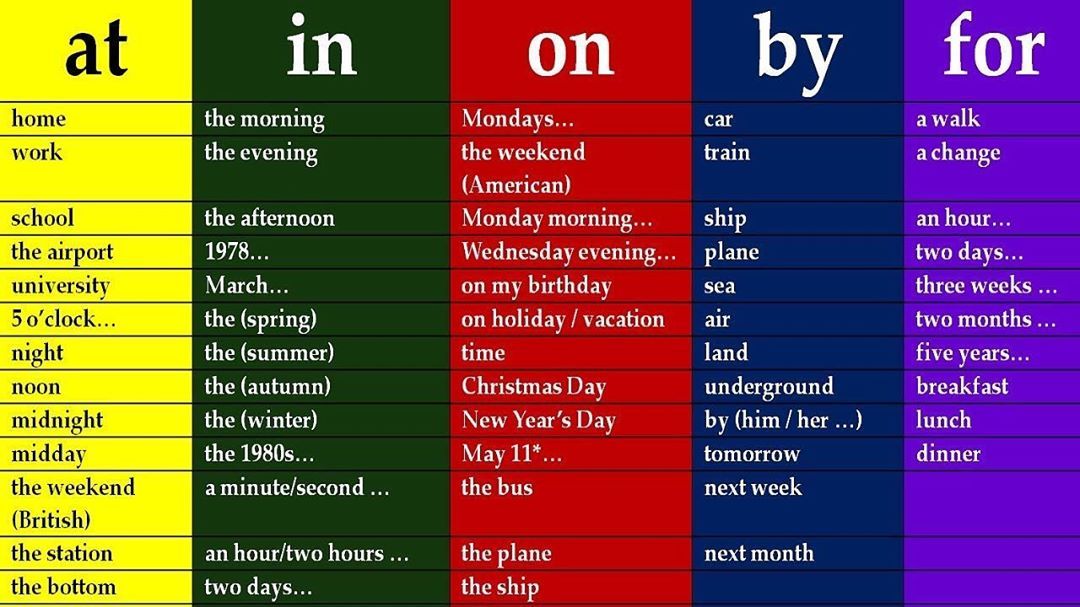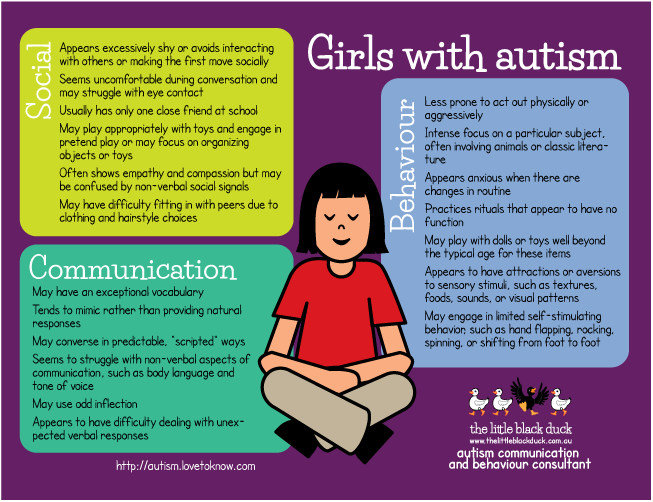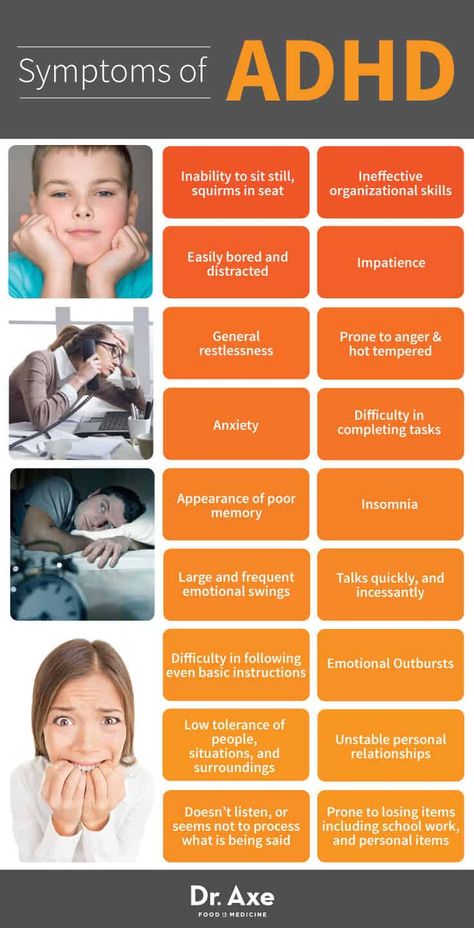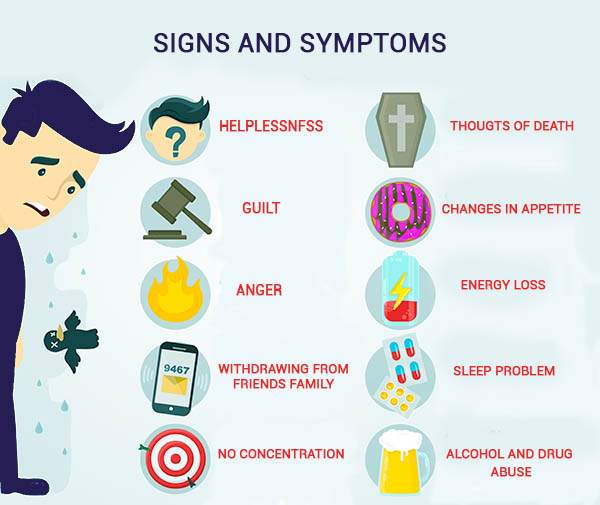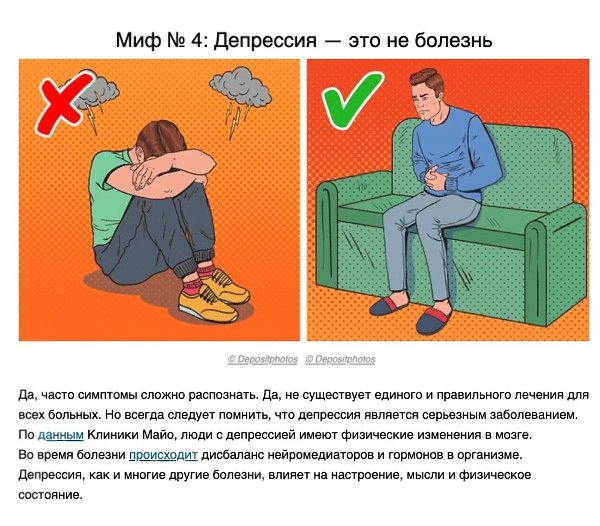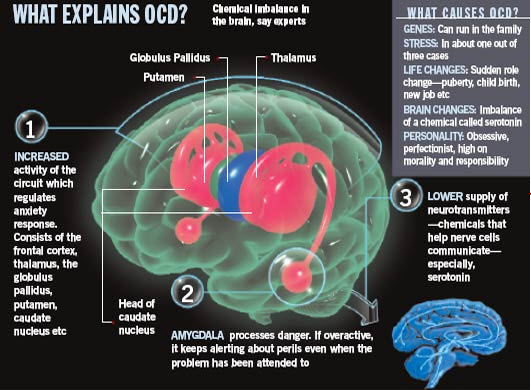How common is the fear of flying
Fear of Flying Statistics (2022 Data)
Fear of Flying Statistics
Most of us have either experienced it ourselves or know someone who has, the crippling fear of flying: The sweaty palms, nausea, and shortness of breath that descends upon you as you contemplate being stuck in the air, a situation in which you have absolutely no control.
Private jet charters have been known to reduce the fear of flying because people feel more in control of their surroundings and they can get one-to-one attention from the flight crew should they start to panic.
What is a fear of flying called?
The technical name for fear of flying is aviophobia, and it is more common than you would expect. Indeed, it adversely affects millions of people, dramatically limiting their careers and personal lives.
In this short guide, we have tried to untangle this phenomenon, providing some statistics and advice on how to overcome the fear of flying.
If you personally struggle with it or know someone that might need help in this area, this guide is for you.
In This Guide:
What is Aviophobia?
How many people have a fear of flying?
How Safe is Flying?
How to Overcome the Fear of Flying?
What are exposure and cognitive-behavioral therapy?
Tips and Advice on How to Deal with Fear of Flying
What is Aviophobia?
Fear of flying or aviophobia is officially classified as an anxiety disorder. This disorder is sometimes called flight phobia, aerophobia, or flight anxiety. It is difficult to strictly define the term since it encompasses the fear someone experiences while flying, as well as the anxiety they feel in anticipation of an upcoming flight.
How many people have a fear of flying?
- Between 33% and 40% of all people experience some form of anxiety when it comes to flying.
- 60% of sufferers experience generalized anxiety during the flight (and leading up to it) that they can easily manage on their own.
- Between 2.5% and 5% of the population have crippling anxiety, a genuine fear of flying that is classified as a clinical phobia.

- People report their first fear of flying “attack” at the age of 27 on average.
Fear of flying statistics show that this anxiety disorder is quite prevalent among the population and can negatively affect a person’s quality of life. This disorder is often manifest in adults, with an average reported first fear of flying “attack” at the age of 27. Being scared of flying is not something we can just write off as unimportant and statistically irrelevant. On average, a flight full of people leaving New York or North Carolina, for example, is bound to have several people on it that might experience aviophobia at different levels of intensity. Aviophobia facts are clear on that much.
Back to navigation
How Safe is Flying?
Once we have established the clinical diagnosis and the causes of fear, it is time to see if these fears are irrational or based on something real. It has often been said, “Flying is still the safest way to travel.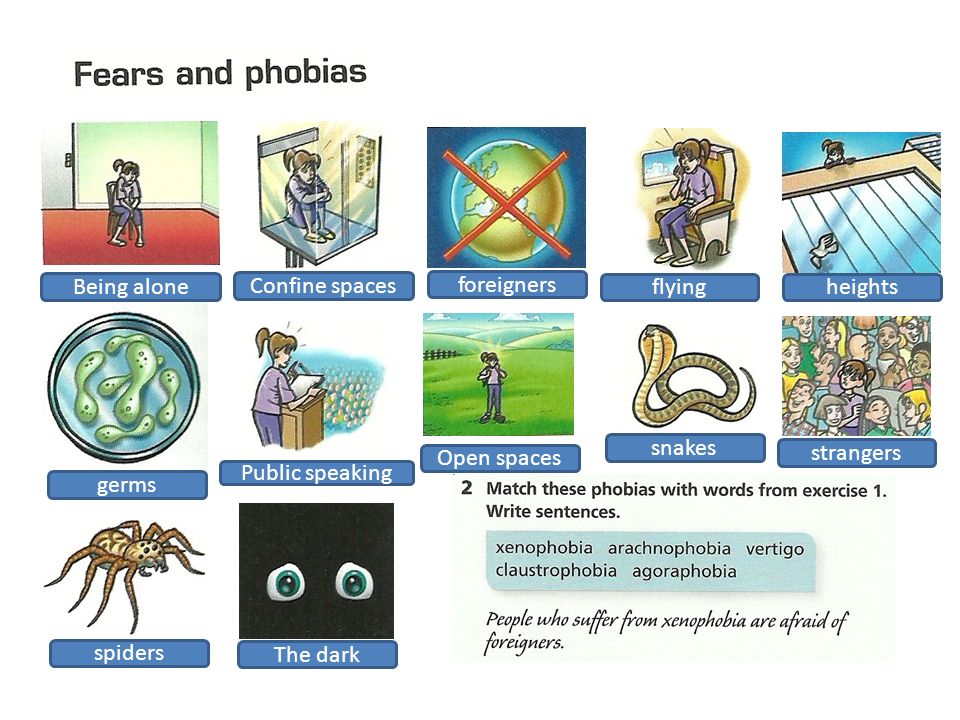 ” However, most media outlets provide detailed and lengthy coverage of any airline crashes and casualties whenever they happen. This happens with enough regularity that we get the feeling that airplanes crash quite often.
” However, most media outlets provide detailed and lengthy coverage of any airline crashes and casualties whenever they happen. This happens with enough regularity that we get the feeling that airplanes crash quite often.
- There was a 1 in 3.37 billion chance of dying in a commercial airline plane crash between 2012-2016.
- 98.6% of crashes do not result in a fatality.
- Of the 140 plane accidents during 2012-2016, only two involved fatalities (1.4%).
- Commercial plane incidents cause death only once in 20 million flights.
It is easy to dismiss aviophobia as an anxiety disorder of the wimpy and weak-minded. But our media-saturated world proves otherwise. News and Getty images, like the recent coverage of Kobe Bryant and eight other people in a helicopter crash, or coverage of tragic events like the 9/11 terrorist attacks are a constant reminder (and trigger) for those who experience anxiety about flying. The airline industry struggles to fight the irrational panic and paranoia connected with plane crash reports and incidents.
The airline industry struggles to fight the irrational panic and paranoia connected with plane crash reports and incidents.
Regardless of the fact that plane incidents might cause death only once in 20 million flights, the perception of danger is something that sticks with people. Also, bear in mind that every media company (like CNN, NBC, BBC, Getty Images) profits from that coverage, and might not have your best interest in mind when it comes to providing facts.
Not only is flying the safest mode of transportation, but its safety has been constantly improving over the last few decades. The Federal Aviation Administration reports statistics of the likelihood of a plane crash on a commercial flight. In cooperation with world-class statistician Arnold Barnett from MIT, they have published statistics showing that:
1968 and 1977: 1 death per 350,000 commercial boardings.
1978 and 1987: 1 death per 750,000 boardings.
1988 and 1997: 1 death per 1.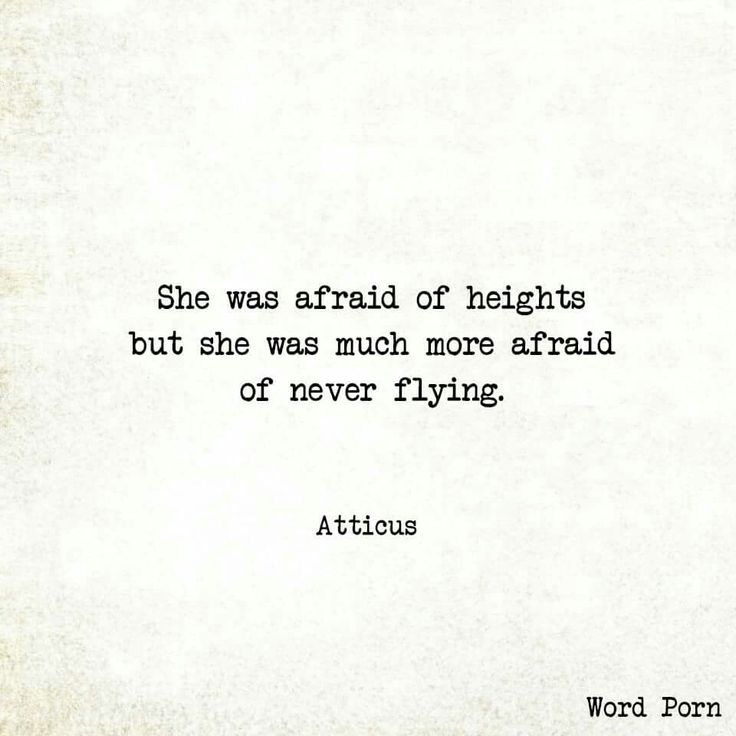 3 million boardings.
3 million boardings.
1998 and 2007: 1 death per 2.7 million boardings.
2008 and 2017: 1 death per 7.9 million boardings.
The airline industry has improved the safety of airline passengers by more than 20 times (twenty-fold) in the last five decades.
At the same time, the safety of other modes of transportation has improved as well, but not nearly as much. The rate of deaths in motor vehicles has been on a constant decline since the 1970s. However, in 2018 alone, more than 36,000 highway deaths were recorded in the U S. Most of us, at one point or another, will be involved in a traffic accident in a motor vehicle, regardless of the outcome. The same cannot be said for air travel.
Back to navigation
How to Overcome the Fear of Flying?
What good are all those flying data and stats to those who feel such strong anxiety about stepping inside a plane? Whether those fears and phobias have a base in reality and statistics is not important. Fear and anxiety are real to those people who experience them. Is there something that you can do or some kind of pill you can take to make it all go away?
Fear and anxiety are real to those people who experience them. Is there something that you can do or some kind of pill you can take to make it all go away?
The answer is a bit more complex, but yes, aviophobia is something that can be managed and cured. We would like to take this moment to mention the dangers of self-medicating or using alcohol or other drugs to “take the edge off” before flights. Those who experience fear of flying might actually make the situation worse by choosing to get drunk before or during a flight. And taking medication might have adverse side effects.
Having to take a long U S coast-to-coast flight from New York to LA is a nightmare for those who have a fear of flying, so downing a few whiskey shots might seem like a great idea. Yet, the reality is that by doing this, you are not treating the causes of your anxiety (and getting better). Rather, you are just dulling your senses and altering your reality. Anxiety medication can help alleviate some of the fear and anxiety, yet it plays no role in improving the long-term condition of those scared of flying.
The most common tool used by therapists and psychologists to treat different types of phobias is exposure therapy. Aviophobia is no different. Exposure therapy, combined with cognitive-behavioral therapy, is still the best way to manage and overcome anxiety about flying.
Back to navigation
What are exposure and cognitive-behavioral therapy?
Exposure therapy is a technique used in behavioral therapy to treat anxiety disorders. It involves exposing the subject to the source anxiety in a safe environment, under the clear perception that he/she will not actually experience any harm. When people who have a fear of flying are regularly exposed to stimuli that trigger anxiety and fear (and they have to simply face the fear) their brain slowly changes its response to these stimuli.
Application of exposure therapy to a variety of anxiety disorders and phobias has been a success. But it requires highly-trained professionals to administer it, as well as plenty of time for the therapy to work. There are no quick solutions to the problem of fear and anxiety on a plane.
There are no quick solutions to the problem of fear and anxiety on a plane.
When it comes to cognitive-behavioral therapy and how it relates to fear of flying, the story is quite similar. While people find that they do not have a say in whether they will experience fear and anxiety during a flight on a plane, with the help of cognitive-behavioral therapy they might find a way to retrain their response to those triggers (and the oncoming anxiety and fear).
This is what cognitive-behavioral therapy does. It trains our brain to respond to certain stimuli, environmental factors, and triggers. A patient with fear of flying is put in a series of scenarios that resemble the factors and environments that activate his/her phobia, and then is introduced to techniques that can help them associate those triggers and factors to more pleasant and manageable experiences. It is not a linear process, and the progress between subjects may vary a lot, but most of the subjects show great improvement.
Back to navigation
Tips and Advice on How to Deal with Fear of Flying
While exposure and cognitive-behavioral therapy are quite effective, they might not be an option for many people. Whether it is the lack of time, funds, medical coverage, or availability of trained therapists, it might be difficult for everyone to take the medically recommended route to deal with anxiety on a plane. What are some other things that might help in those situations?
The airline industry puts a lot of effort into training its personnel to deal with situations that might arise on the plane. Flight attendants are well aware of aviophobia. They have already dealt with people who experience fear and anxiety on a plane. If you are one of those, it might not be a bad idea to inform a flight attendant, once you board the plane, that you have trouble flying and experience anxiety. The flight crew will reassure you of the safety of the flight, as well as pay close attention to your mental state during the flight, or provide you with some breathing exercises that might help.
In addition to that, finding a distraction during stressful periods on a flight (such as turbulence, takeoff, and landing) could prove to be beneficial. If you are focused on reading your book, magazine, watching a movie, listening to music, or playing a video game, you are less likely to pay attention to the triggers that might make your anxiety worse. The goal is to feel like you are somewhere else, rather than on a plane.
We have already mentioned that it is a bad idea to self-medicate before or on the flight. If your anxiety is quite mild, and a drink or two on a flight might get you more relaxed, or perhaps help you sleep on a long flight, go ahead. Yet, if you find it almost impossible to step a foot on a plane without taking medication or being intoxicated, it is best to avoid it altogether due to potential side effects and your safety on the flight.
Back to navigation
Conclusion
Aviophobia is very real, and it adversely affects a large percentage of the population.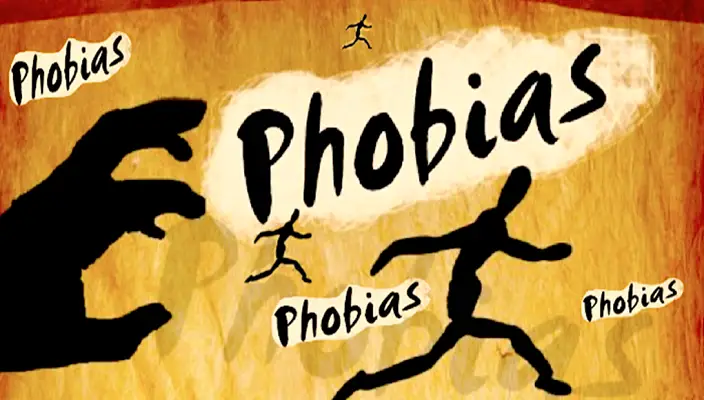 More than one-third of all people experience some form of fear or anxiety when it comes to flying. Between 2.5% and 5% of those are considered clinical cases (this means they cannot go without specialized therapy and/or medication). While it is based on irrational triggers, aviophobia is still a real nuisance for many and negatively impacts their personal lives and careers.
More than one-third of all people experience some form of fear or anxiety when it comes to flying. Between 2.5% and 5% of those are considered clinical cases (this means they cannot go without specialized therapy and/or medication). While it is based on irrational triggers, aviophobia is still a real nuisance for many and negatively impacts their personal lives and careers.
The statistics are clear: commercial flying is by far the safest mode of transportation a person can use. Plane safety has been on a constant incline since the 1970s, and the likelihood of a fatal incident on a commercial plane is now at odds of 1 to 8,000,000. The studies and statistics of the last decade are even more impressive, showing a statistical trend of up to 1 in 3.37 billion chance for a fatality.
However, it is important not to dismiss the anxiety and fear that a person might experience when flying. With plenty of treatment options available to make the condition manageable, there is hope for everyone.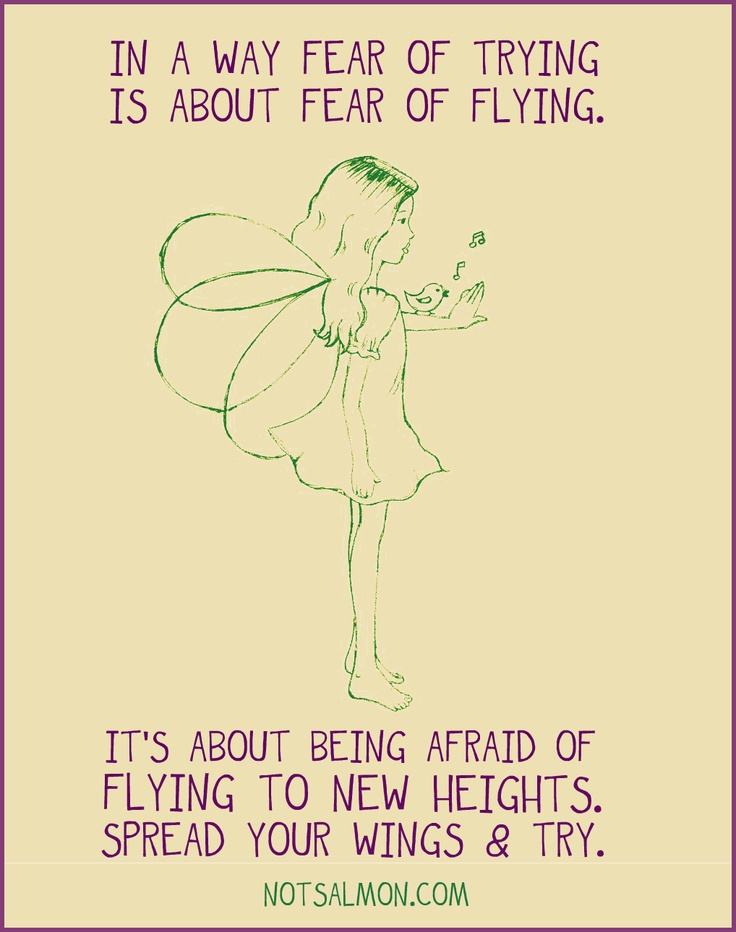 We do hope that you found this guide useful and that your aviophobia will one day be behind you.
We do hope that you found this guide useful and that your aviophobia will one day be behind you.
Reference URLs
https://www.ncbi.nlm.nih.gov/pubmed/26186430
https://www.medicalnewstoday.com/articles/320367.php#6
Plane crash and Fear of Flying Statistics
https://time.com/5330978/fear-of-flying-aviophobia/
anxietypanichealth.com/2008/07/17/aviophobia-understanding-the-fear-of-flying/
http://www.nbcnews.com/id/31071455/ns/travel-travel_tips/t/whats-behind-fear-flying/
Why Some People Have Aviophobia, or Fear of Flying
At one point or another, as many as 12.5% of Americans will struggle with a phobia — “an intense, irrational fear of something that poses little or no actual danger” — according to the National Institute of Mental Health. Of these, a fear of flying, or aviophobia, is one of the most common, with estimated prevalence ranging from 2.5% to 6.5% of the population.
Far more people have a fear of flying that doesn’t reach phobia levels, despite the fact that people are flying more than ever before and plenty of data shows it’s a reliably safe way to travel.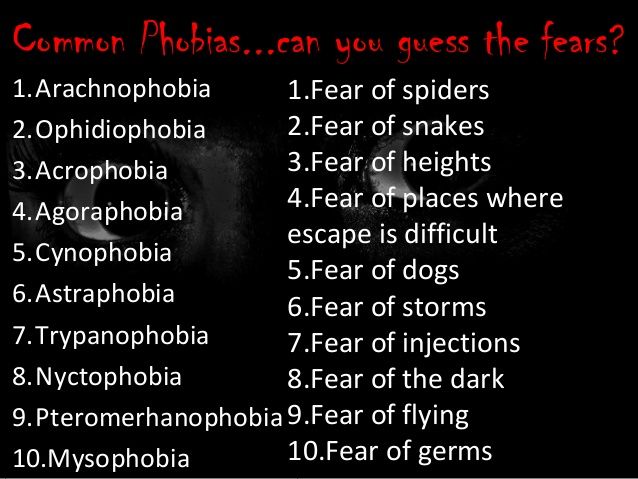 So what is it about flying that stirs such widespread anxiety?
So what is it about flying that stirs such widespread anxiety?
“A lot of it is the lack of control they have in the situation,” explains Todd Farchione, the director of Boston University’s Intensive Treatment Program for Panic Disorder and Specific Phobias. “When the doors close, they’re in it. They’re stuck. They can’t get out of the situation. I think that’s often what’s most frightening for most people.”
Fear of heights or crashes, or not understanding how flight works, may also play a part, Farchione says. And flying is a uniquely terrifying activity for many people because they know that if fear or anxiety strikes during the trip, there’s little they can do, he says.
“They’re afraid that they might have fear in the situation and be unable to get away from it,” Farchione says. “It’s this image of being stuck sweating and being totally afraid for two hours, four hours, six hours. They’re at the mercy of the pilot.”
Sound familiar? Here’s what you can do if you’re afraid of flying.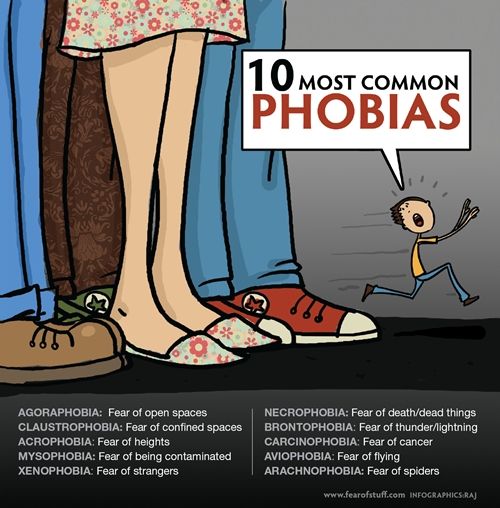
Change your response
It’s okay to be afraid of flying, Farchione says. What’s more important is reacting to the situation in a healthy way.
Many anxious fliers manage their fear by gripping the seats, studying the flight attendants or analyzing every last bit of turbulence, Farchione says. But in doing so, “they’re actually contributing to the fear. Their actions are inadvertently telling them that the situation is dangerous, when in fact it’s not.”
Instead, do whatever it takes to distract yourself. Read a magazine, watch television, listen to music or talk to a travel companion. It may also help to practice deep breathing techniques and consciously release muscle tension. “Even just putting a smile on your face can change the emotional reaction,” Farchione says.
Don’t self-medicate
If you don’t fly very often, using a pre-flight Chardonnay to calm your nerves may not be terribly harmful, Farchione says. But if you travel regularly and consistently rely on sleeping pills, alcohol or other substances to get through the experience, you’re just reinforcing bad behavior.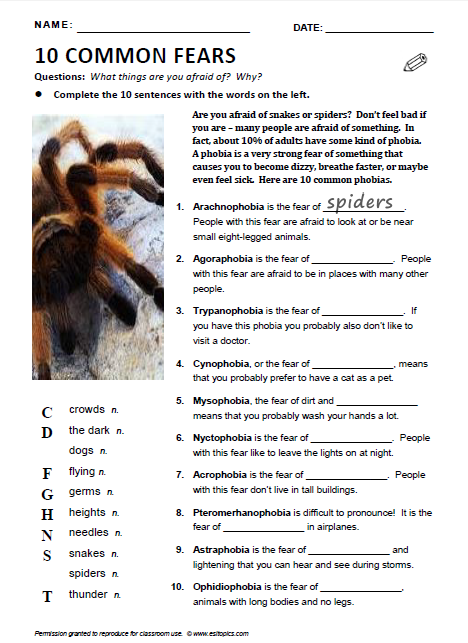 “It creates a temporary Band-Aid, but the fear starts to build over time,” Farchione says. “Every time they drink or take medication to get through that situation, they’re saying to themselves, ‘I can’t feel what I feel. I can’t cope with this.’ Because of that, they’re going to be more frightened the next time.”
“It creates a temporary Band-Aid, but the fear starts to build over time,” Farchione says. “Every time they drink or take medication to get through that situation, they’re saying to themselves, ‘I can’t feel what I feel. I can’t cope with this.’ Because of that, they’re going to be more frightened the next time.”
Prepare for the flight right
Many people with aviophobia experience significant anxiety leading up to a flight. In some cases, Farchione says, this can be worse than flying itself.
“In that scenario, I do think it’s useful for the person to ask themselves questions regarding what it is they’re afraid of, and what they think is going to happen on the flight,” Farchione says. Doing so may help you realize there’s nothing to be afraid of, or at least to identify and address sources of fear.
See a professional
The above strategies may work for someone with a non-clinical fear of flying or mild aviophobia, but severe phobias often require professional treatment. Exposure therapy — a process of growing acclimated to and eventually accepting the source of fear — is often used to treat phobias, but that’s difficult to arrange for most people with aviophobia. Farchione says treatment for the condition is increasingly moving toward helping patients reframe their fear response, and adds that virtual reality flight simulators may help as well.
Exposure therapy — a process of growing acclimated to and eventually accepting the source of fear — is often used to treat phobias, but that’s difficult to arrange for most people with aviophobia. Farchione says treatment for the condition is increasingly moving toward helping patients reframe their fear response, and adds that virtual reality flight simulators may help as well.
Write to Jamie Ducharme at [email protected].
90,000 causes, effects, methods of deliverance. Interview with Alexei Gervash ("We fly without fear") - FrequentFlyers.ru Perhaps no other mode of transport causes as much fear as an airplane. No one is afraid to ride a car, bike or subway. No one's hamstrings are shaking on the bus or on the ferry. And the plane, the safest mode of transport, is associated by many exclusively with mountains of corpses. In science, this is called aerophobia. About what it is and how to deal with it, Alexey Gervash, the founder and head of the Flying Without Fear treatment center for aerophobia, told frequentflyers. ru. nine0003
ru. nine0003
- Let's start with how did the idea of creating such a school as "Flying Without Fear" come about? How did you know it would be needed?
- This is actually a personal interest. I had a girlfriend that I dated and she was aerophobic. As a pilot, I realized that my knowledge and logic are not enough to help a person: it requires some more specialized, professional knowledge. I started looking for who is doing this, I realized that no one - a niche was identified that could be occupied, so I occupied it. nine0003
— How widespread is aerophobia? How many people come to you every week or every month?
- In general, this is very interesting, because 30% of the adult population suffers from aerophobia in the world. That is, in one form or another it is every third person. From severe discomfort to complete avoidance of aircraft. 30% of the adult population is about a billion people in the world. At the same time, about 1,000 people a year come to each specialized center, like ours. From here you can see a monstrous gap between those who have this problem and those who turn to professionals for its elimination. nine0003
From here you can see a monstrous gap between those who have this problem and those who turn to professionals for its elimination. nine0003
— What is the ratio of people who have a slight aerophobia — well, for example, they will get a beer in a bar before a flight, and excellent — and hardcore aerophobes, who, for example, will fundamentally travel to Vladivostok for a week by train, just not to fly?
— Those who drink beer and feel good are not our clients, we are not particularly interested in them. They, in fact, are not considered aerophobes. What distinguishes a phobia from a non-phobia? This is an avoidant aspect. A person who has a phobia will avoid meeting the object of their fear. People who don’t understand something somewhere, are afraid of something somewhere, somewhere the media has loaded them and as a result they experience some kind of discomfort - we don’t take them into account at all, we don’t consider them, this is not our clientele. When we talk about 30% of those suffering from aerophobia, we are talking about those who avoid flying.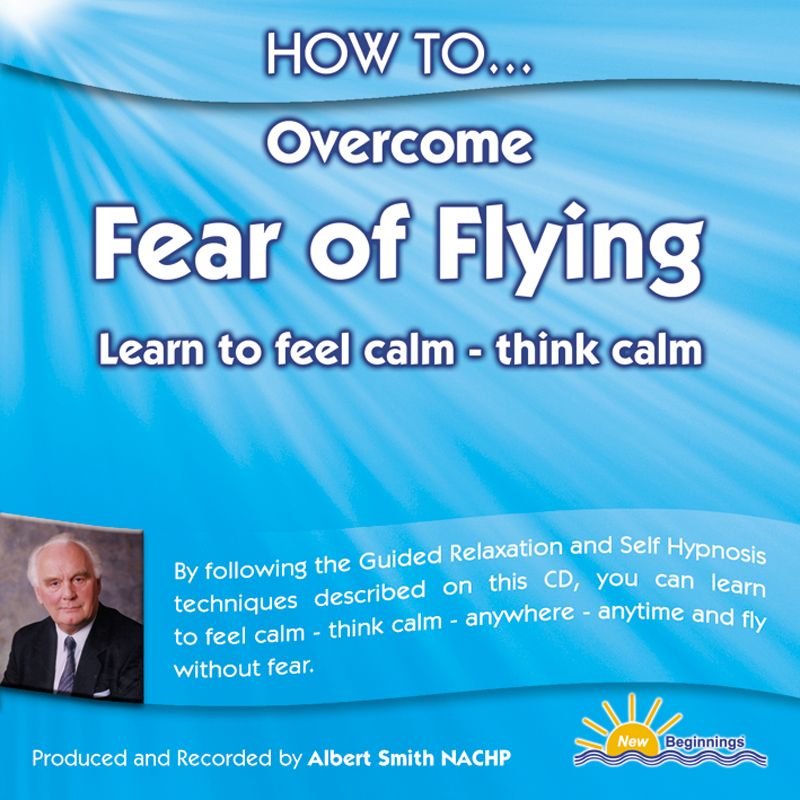 Avoidance is also different. It happens, for example, alcohol: a person needs to take such a dose of alcohol that he does not understand what is happening, so that there is a distinction between him and reality. This is not a mug of beer, these are serious doses. The same girl that I told you about, that I dated - a completely non-drinker person - she needed half a bottle of whiskey! There is an avoidance of certain flights: long flights, small planes, big planes. There is complete avoidance, there is avoidance if possible: "If it's possible not to fly, I won't fly. And if life compels and rapes - OK, then I'll fly" . These phobic people are 30%.
Avoidance is also different. It happens, for example, alcohol: a person needs to take such a dose of alcohol that he does not understand what is happening, so that there is a distinction between him and reality. This is not a mug of beer, these are serious doses. The same girl that I told you about, that I dated - a completely non-drinker person - she needed half a bottle of whiskey! There is an avoidance of certain flights: long flights, small planes, big planes. There is complete avoidance, there is avoidance if possible: "If it's possible not to fly, I won't fly. And if life compels and rapes - OK, then I'll fly" . These phobic people are 30%.
— And how embarrassed are people about their aerophobia? In theory, any normal person understands that planes fly, millions of passengers remain unharmed every day, and it’s a shame to be afraid. Is that why he doesn't want to admit it? I have an analogy: there are people who are alcoholics. But they do not consider themselves alcoholics, but say that they just drink sometimes, what's wrong with that? How many of those 30% of aerophobes are ready to admit it and start getting rid of it? nine0006
- We have already said that out of a billion aerophobes, a thousand per year turn to the center. There are 50 such centers in the world - respectively, 50 thousand per billion. Here is the ratio of those who are sick and those who are ready to do something about it. And the rest - yes, just like alcoholics who come up with a million reasons why they are not alcoholics, so aerophobes come up with a million reasons why they are not aerophobic. This is especially true for men. They come up with some special world for themselves, in which they are not people with an unhealthy psyche (because aerophobia is an unhealthy psyche), but smart people who take care of their lives. And the rest of the billions that fly are just crazy or indifferent. In fact, the vast majority of men do not admit that they have problems and are trying to shift the problem from a sore head to a healthy one, that is, to aviation. And to explain to everyone around that aviation is bad, because there was a case, I myself heard it. Further, the brain does not work correctly, begins to look for confirmation of its own failures, and finds them in the media, which joyfully carry all sorts of snowstorms and rubbish about aviation; and in stories, of which there are a million; and even often they themselves come up with some stories that for themselves, if you believe in them, are a logical justification for the fact that all this is very, very dangerous.
There are 50 such centers in the world - respectively, 50 thousand per billion. Here is the ratio of those who are sick and those who are ready to do something about it. And the rest - yes, just like alcoholics who come up with a million reasons why they are not alcoholics, so aerophobes come up with a million reasons why they are not aerophobic. This is especially true for men. They come up with some special world for themselves, in which they are not people with an unhealthy psyche (because aerophobia is an unhealthy psyche), but smart people who take care of their lives. And the rest of the billions that fly are just crazy or indifferent. In fact, the vast majority of men do not admit that they have problems and are trying to shift the problem from a sore head to a healthy one, that is, to aviation. And to explain to everyone around that aviation is bad, because there was a case, I myself heard it. Further, the brain does not work correctly, begins to look for confirmation of its own failures, and finds them in the media, which joyfully carry all sorts of snowstorms and rubbish about aviation; and in stories, of which there are a million; and even often they themselves come up with some stories that for themselves, if you believe in them, are a logical justification for the fact that all this is very, very dangerous.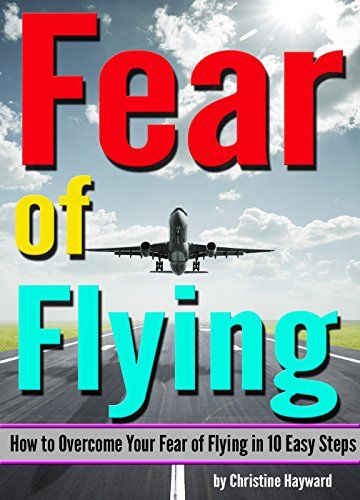 Every aerophobic male has this story: “Yes, I saw it myself once, the pilots were sitting there, they drank the whole flight, and then went into the cockpit” , he begins to believe in this and does not even think about the fact that, for example, the pilot flew the "back" he rests. And he went to the cockpit after landing the return flight to pick up his tunic and bag from there, for example. All this is given at face value, a person really believes in it. Just as an alcoholic believes that he is not an alcoholic, but wants to - he drinks, does not want - he does not drink, so the aerophobe believes that the problem is not in him, but in airplanes. nine0007
Every aerophobic male has this story: “Yes, I saw it myself once, the pilots were sitting there, they drank the whole flight, and then went into the cockpit” , he begins to believe in this and does not even think about the fact that, for example, the pilot flew the "back" he rests. And he went to the cockpit after landing the return flight to pick up his tunic and bag from there, for example. All this is given at face value, a person really believes in it. Just as an alcoholic believes that he is not an alcoholic, but wants to - he drinks, does not want - he does not drink, so the aerophobe believes that the problem is not in him, but in airplanes. nine0007
— How to explain to such a person that the problem is in him? Or will such a person, in principle, never come to you, because he does not believe in it?
- This is the main problem of all the centers for the treatment of aerophobia in the world. There are only 50 of them, and only 150 specialists who know this "sore". But let's ask ourselves a question: why, with a billion aerophobes in the world - and this is a third of the world's population, a huge potential market, every second should treat aerophobia - there are only 150 of us? Because there is no market! And you sounded absolutely right: a person is at the stage of denial: "the problem is not with me, the problem is with aviation." Moreover, all aerophobes are people of a certain psychotype. These are people who are suspicious, anxious, suspicious, who do not trust anyone, who are inclined to see deceit and a catch everywhere. We receive calls like: 9 every day0007 - “Well, what do you mean, that this silly letter of yours helped someone?”
But let's ask ourselves a question: why, with a billion aerophobes in the world - and this is a third of the world's population, a huge potential market, every second should treat aerophobia - there are only 150 of us? Because there is no market! And you sounded absolutely right: a person is at the stage of denial: "the problem is not with me, the problem is with aviation." Moreover, all aerophobes are people of a certain psychotype. These are people who are suspicious, anxious, suspicious, who do not trust anyone, who are inclined to see deceit and a catch everywhere. We receive calls like: 9 every day0007 - “Well, what do you mean, that this silly letter of yours helped someone?”
- "Go to the site, there are already hundreds, even thousands of stories with photos, videos"
- "Come on, we know your photos, take a picture of yourself to fool us" names, these are people you can write to, ask their opinion, how did they take the course with us ... "
- "Yes, these are all your friends"
- "What, do I have thousands of friends?"
- "Yes, of course" .
This suspiciousness does not play into our hands, and therefore most aerophobes, who are sure that the problem is not in them, but in airplanes, being extremely suspicious and extremely suspicious, will simply never go for treatment. So the answer to your question is "no way". Unfortunately.
— Why is aerophobia so widespread? Why are they not afraid to drive cars or sail on steamboats or ride an elevator? How is an airplane for aerophobes different from other vehicles if they are so suspicious and cowardly? nine0006
There are two points here. The first is that all aerophobes have certain errors in their logical chains. We all know them. These errors are most clearly manifested in the aircraft. For example, why aren't people afraid to go outside and ride in a car? Because their erroneous logical chain immediately works and says: "Behind the wheel, I control everything, nothing will happen to me" . In an airplane, there is no such control, and there is not even an illusion of control. Because in fact it is not in the car either, because standing in the left lane in a traffic jam, we do not know if the truck that is rushing along the opposite lane will drive into us. But they have the illusion that they are in control. There are many more erroneous logical chains, for example: "If something happens on the plane, it will fall and this is the most terrible death" . Or: "If something happens on the ground, I can always get out or escape, but in an airplane I can't get out and escape" . The second reason is that those processes that are routine for us, the brain a priori cannot perceive as dangerous. Walking down the street, driving a car - these processes are routine for the vast majority of us. There are people who have such a twisted psyche that they suffer from panic attacks and cannot leave the house: they are covered by panic. For them, going out into the street ceases to be a routine. Yes, yes, there may be a phobia of going out, but this is quite rare.
Flying by plane for each of us, even for frequent flyers, is once a month, well, twice a month, it still never becomes a routine. This is always the exception to the rule; process that is not ours. And even frequent flyers develop a fear of turbulence over time, because turbulence is not a routine within a routine. That is, if the plane flies to New York for 10 hours, 9 of themhours - smooth flight, and 1 hour - turbulence, then it begins to be perceived as a danger. In addition, in an airplane, all our weaknesses begin to manifest themselves in the greatest way: the need to control the situation, which we have already talked about, or claustrophobia - an airplane is a super-enclosed space. Or the fear of heights, when a person cannot look down from the ninth floor and he and his children will never sit on any Ferris wheel, and the plane is a super height. That is, whatever you take, on the plane it will be with the prefix "super": super height, super speed, super loss of control. And plus logical errors, which are the most common in relation to aircraft.
nine0003
— Do you help people who have specific aerophobia? For example, as you already said, when people see a small plane, or, in their opinion, an old plane: there are a lot of cases on Facebook when a Tu-154 of the same age was put in place of the expected Boeing, and someone refused to fly, handed over tickets. Or are such people already hopeless?
— Aerophobia is not hopeless at all, it becomes hopeless when a person does not go for treatment. If he turns to specialists, then at 98% of cases we can help. What you are talking about is such a pinpoint aerophobia - as a rule, it does not happen. Globally, people are divided into two types. Some people see the world as something safe and sometimes something frightens them, for example, a KAMAZ in the oncoming lane or the sound of an explosion on a nearby street. And there are people who globally see the world as something very dangerous and life as a dangerous thing, and sometimes they have specific moments of “relaxation”. These are different people, their ratio in society is 70 to 30, and the same ratio of non-aerophobes and aerophobes. If a person belongs to the 30%, he will see a threat in anything. In the cloud, on a plane that wasn't the one he was supposed to be, in a delayed departure, not the sound of landing gear he was used to. Airbuses have a hydraulic device, PTU, which can turn on immediately after takeoff, so aerophobes, hearing its sound, simply turn white with horror and produce tons of adrenaline For the 70% for whom the world is a safe place, it's just some kind of sound: "I'm not an aviator to understand sounds" . So the aerophobe looks for danger everywhere, but the non-aerophobe understands that there is a system in which everything is as safe as anything can be safe. Everyone understands that there is no absolute security and there are always some microscopic chances in everything. nine0003
- Do you think that it is a manifestation of aerophobia that people clap when landing? To what extent is this a “Russian” character trait, or is it typical for all aerophobes?
- This is again about 30% for whom everything in the world is a threat. If this is a threat, if it is not even an aerophobia that has yet developed, but you perceive the flight as a danger, then you will clap when landing: “Swept through” . Getting rid of danger: "Thank you to the pilots for saving my life" - this is how these claps are translated into Russian. In fact, this is quite stupid and strange, like clapping for a bus driver who has stopped at a bus stop. nine0007
— So is this a Russian trait or an international one? Often this happens on flights from Russia and to Russia...
- This is more typical of Russians. I have no logical explanation, I can only guess. Firstly, in the world it is more common, if you have some kind of problem, to go and deal with this problem, but in Russia it is typical: “Yes, I’m all by myself, I’ll plump and fly” . But, again, the numbers show that this thousand patients a year is in almost any center for the treatment of aerophobia. That is, in the West, people are more concerned with themselves - this is true, but in the case of aerophobia, this is not true. In the world, I also hear this from time to time, but only two or three claps, we call them relief claps. This is from the same opera that it becomes easier for any aerophobe when the plane approaches the ground. That is, as a pilot, I tense up a meter from the ground, because I have a speed of 250 km / h and I need to get point-to-point to the right place on the runway, and aerophobes relax: they don’t care that this is the most potentially emergency moment of the flight . For them, it is a relief from pain. The earth is perceived as a guarantor of security. This is also not true, this is an erroneous logical chain, because much more people die on earth in the world than in airplanes. nine0003
— You have face-to-face courses and you have a video course. Is there a difference in their effectiveness? For example, there is Carr's book How to Quit Smoking? - it helps someone, but many read it and continue to smoke further.
- There is certainly a difference in efficiency, because any self-help product, no matter how high-quality it is, also implies work from the second side - the one who reads or watches it. And if in the face-to-face version I can correct something, point out to a person his mistakes, push him to some action that he does not want to do, then in the remote version it all depends on the viewer, no matter how high-quality the product is. Our video products are very high quality. The fact is that all aerophobes have erroneous thought patterns that do not change from person to person. If they say to me today: “This is Vasya, he is afraid to fly” , then I can tell Vasya about this for half his life, starting from how he was breastfed as a child, whether he was picked up or not, what happened to him and what it is for a man today - simply by the fact that he is afraid of flying.
— Can you tell me more about this fact? What is the relationship between breastfeeding in childhood and fear of flying?
- This is a large and long academic topic, not for interviews. There have been very serious studies on this subject. I can say very, very briefly that these are people who have an incorrect emotional relationship with their parents. There is either overcare or undercare: many varieties. With someone, parents lisp too much ( put on two scarves, you will catch a cold, do not enter the elevator with anyone, move away from the dog - it will bite, and so on ). This is overcare. There is undercare, for example, “stray” children, when parents at the age of 18-19 flew in, gave birth, they don’t understand anything why this child is needed, he also yells ... The point is that healthy, normal emotional relationships between parents and a child are found in a third of the cases. In the remaining two-thirds of the cases, the relationship is unhealthy, and even by the type of aerophobia, I can tell what specific unhealthy relationship these parents and this child had. In my last year, I had one young man who either drank some water or wiped his hands, all the time listening to himself what was happening in his body, where his butt muscle was tense, where his butt muscle was not tense. These are ideas from a family where for any sneeze or any cough, an ambulance was immediately called and three jackets were put on so as not to slip through.
From this, legs grow, and not from airplanes and not from aviation. So, I answered the previous question about efficiency. As you can see, these patterns are common to everyone, and when I talk to a person in an interactive product, I know what is on their mind. I speak to him from the screen, but I know how he thinks. I know that he thinks that he has no control over the situation and that he will fall down at any moment. And that turbulence is terrible. And that he can't get out, and that this is the most terrible death, and so on and so forth. Therefore, I can explain each of these chains. But what he does with this information, how he perceives, how qualitatively he perceives - I have no control over this. I can say especially important things twice, thrice, I can ask leading questions, but I can't take a person by the hand and say: "Look, you're wrong here, let's do it like this" . Therefore, the efficiency is somewhat lower. We recently did a large study comparing the effectiveness of face-to-face and distance learning.
There was a questionnaire that was distributed to a group of 3,000 of our graduates who agreed to take part. There were three response options: “Thank you, your course is amazing, now I fly without any fear” , “Thank you, it became much easier for me to fly, although the fear did not completely go away” and "Your course didn't help me for a second, the fear didn't go away" . So, in face-to-face classes, 3% gave the third answer, in absentia 13%. This is the delta between full-time and part-time.
— And what about people who cannot attend face-to-face courses? For example, they do not live in Moscow.
— The answer is obvious: take correspondence courses. But the problem, again, is that due to the suspiciousness and character that aerophobes always have by 99%, they do not believe in these correspondence courses. They don’t believe in face-to-face, and they don’t believe in correspondence even more. We hear this dozens of times every day:
“The correspondence course won't help me. I need a full-time course, but I live in Yakutsk and therefore I won’t take your full-time course” .
« How do you know if it will help you or not, you haven't seen it? »
"It definitely won't help me" . There is not only suspiciousness and suspicion. You carried out a metaphor with a smoker: when my wife smoked for 15 years, I asked her to read Carr's book for three years. She always found reasons why she wouldn't do it, not now and so on. Often people are very afraid to get rid of their weaknesses and fears. And the correspondence course, since it is available, means that we need to start doing something. It's much more convenient to say: "Now, if there was a full-time in Yakutsk, then I would go" . But we tried to conduct face-to-face courses in the regions - groups do not gather. Because in words - "I would go" , but when such an opportunity arises - "I will not go, because I have no money, no desire, I'm on vacation, in the country, I'm flying away, leaving, sailing away and so on ".
— And what about those who do not believe in the courses? Is it possible to advise him, for example, to fly more often, so that he would be convinced over and over again that nothing dangerous happens? Or go skydiving, or buy a joystick and fly at home in a simulator to make sure that there is nothing too complicated in aviation? nine0006
- Answer: "No" to all the proposed options. Aerophobia is defined by the International Classifier of Mental Diseases as a mental disorder. This is a very serious thing. This is a thing so serious that no self-help is possible. Psychiatric disorders do not heal on their own. At best, this is possible with the help of medications. Why does the option to fly more often not work? Because the wrong process becomes routine: it is the process of phobic flying. And for fob, every flight is a lottery "I will survive - I will not survive" with a probability of 50 to 50. A person with aerophobia flies, peering into the faces of flight attendants, trying to understand from them whether the plane is falling or not. He shudders with every sway, grabs the armrests at the slightest turbulence, closes his eyes on takeoff so as not to see this horror. And it is precisely this pattern of behavior during flight that becomes routine and is prescribed in the head as an established behavior model. Therefore, the frequency of phobic flights only exacerbates the problem, and does not solve it. She solves it later, when you have learned to control yourself, not the plane, when you have learned to think correctly and recognize mistakes, have learned to control the production of adrenaline, etc. Then the frequency of flights works to your advantage. Until you do this, it works against you, because it is the painful flights that become commonplace. I don’t see anything in common with a parachute - the first thing a person will see on board an ordinary plane is that there are no parachutes! Learning how to fly a simulator or a small sports plane yourself does not help either, because the fundamental issue of lack of control does not go away.
nine0025 "Here I control the situation, but I don't trust Vasya behind the closed door!" It is necessary to understand one thing: aerophobia is called precisely aerophobia. A phobia is a mental disorder. If it were common sense, it would be called "aerologic" or "aerocommon sense" or "aero-caution" or something. But this is a phobia, a mental disorder, and it must be eliminated with the help of professional structures. If your tooth rots with the root, you can’t do without a dentist. You need to go to the dentist. No need to go to the gynecologist, no need to read self-help books for bad teeth. There is a health problem - go to a specialist doctor for this problem. This is a serious complex thing that is being solved seriously and comprehensively. nine0003
Ilya Shatilin
How to overcome the fear of flights
- Katya Moskvich
- BBC Future
Sprinkle to our spray: Sprinkle .
Image Credit, iStock
Many of us view air travel as a necessary evil, but for some, it's just a pain in the ass. How to overcome the fear of flying on an airplane, the correspondent found out BBC Future .
Although air crashes are rare, their effects are widely reported in the media.
The recurring news stories of plane wreckage and blanketed victims are so terrifying to some of us that even the thought of boarding becomes unbearable.
- How dangerous are mobile phones on board an airliner?
- Why a lightning strike is not dangerous for the plane in which you are flying
- Struggling for armrests in the most uncomfortable seat on a plane
- Lessons learned from Germanwings: how to solve the cockpit door problem
Take, for example, the recent tragedies with passenger planes of the Malaysian airline Malaysia Airlines. Flight Mh470 disappeared somewhere over the Indian Ocean, and flight Mh27 was shot down in the sky over Ukraine. Two years later, both cases are still periodically mentioned in the press.
Last year, a suicidal pilot sent a passenger liner of the German company Germanwings into an alpine slope. nine0003
At the end of October of the same year, the A321 aircraft of the Russian airline Kogalymavia, flying from Sharm el-Sheikh to St. Petersburg, crashed while flying over the Sinai Peninsula - due to the operation of an explosive device on board.
Experts, pointing to statistical calculations, repeat: aerophobia is irrational - after all, the probability of dying in a car accident is much higher than in an aviation accident.
More than 3.5 billion people used commercial air travel in 2015, according to the International Air Transport Association (IATA). nine0003
During this period, 68 aviation accidents were recorded, including four crashes that claimed 136 lives. Together with the Germanwings and Kogalymavia disasters, the total number of victims was 510 people.
Image copyright, iStock
Image caption,Air accidents like the Malaysian Airlines tragedy only increase some people's fear of flying
Skip the Podcast and continue reading.
Podcast
What was that?
We quickly, simply and clearly explain what happened, why it's important and what's next.
episodes
The End of History Podcast
According to the World Health Organization, 1.25 million people died in road accidents worldwide in 2013.
In general, vehicles are about 100 times more dangerous than airplanes. The two most common causes of death are cardiovascular disease and cancer.
And yet the number of aerophobes is not decreasing. According to a survey conducted in 2010 by Boeing, in the United States, for example, 17% of the population is afraid to fly.
Someone is afraid of a possible plane crash, someone cannot cope with the fear of a closed space from which there is no way out until the plane lands.
Celebrities also suffer from aerophobia. Film director Wes Anderson, who directed the films The Grand Budapest Hotel and The Tannenbaum Family, prefers to travel to Europe by sea. nine0003
The late rock musician David Bowie opted for ships and trains after his plane from Cyprus was caught in a thunderstorm in the early 1970s.
Bowie resumed flying in the 1980s, but stopped flying again after suffering a heart attack and giving birth to his daughter Lexie.
Movie actress Kate Winslet is said to always fly with her husband in different planes so that in the event of a plane crash their children would not be left orphans.
"Unfortunately, aerophobia doesn't have a single cause - there are many potential sources," says Matthew Price, a professor of clinical psychology at the US University of Vermont who studies anxiety disorders.
According to him, some people are afraid to fly because they have never done it before or because of past unpleasant experiences associated with air travel.
"The reason could be past flying experience, news reports of plane crashes, or fear of confined spaces," says Price. nine0003
A surge in aerophobia was recorded, for example, after the events of September 11, 2001, when terrorists used hijacked passenger planes as weapons.
According to psychologist Gerd Gigerenser of the Max Planck Society's Institute for Human Development, within a year of those tragic events, thousands of Americans chose to switch to cars.
As a result, the number of air passengers decreased and the number of victims of car accidents increased by 1595, as people underestimated the risks associated with driving and overestimated the likelihood of dying in an aircraft accident. nine0003
There is another category of aerophobes: their fear of flying is just one of the manifestations of other fears.
It could be a fear of losing control of a situation, a fear of enclosed spaces or even a fear of having a phobia, says psychologist Robert Bohr, who is a pilot and provides counseling services to the Royal Air Force.
Aerophobia can also be caused by factors not directly related to aviation - for example, stress at work, a troubled marriage, or an illness of a child left at home. nine0003
Image copyright, iStock
Image caption,Some people are so afraid of flying that they prefer to travel by water
One of the factors that can increase anxiety is related to the measures taken to ensure the safety of air passengers. These are inspections at airports and pre-flight demonstrations of emergency equipment.
Anti-terror security measures at airports may make some of us fear a possible terrorist attack, and a safety briefing before take-off can remind us that accidents do happen sometimes. nine0003
Therefore, panic-prone people often try to ignore the flight attendants' instructions. However, this is a mistake.
"A pre-flight briefing helps passengers plan to leave the plane in an emergency, which improves their chances of survival," Bohr explains. "If you ignore it, it's more likely that your brain will be unable to find a way out when a danger arises."
For example, after the recent emergency landing of an Emirates aircraft at Dubai Airport, many passengers began grabbing their hand luggage from the shelves during the evacuation. As a result, the risk to people has increased. nine0003
"During the safety briefing, flight attendants emphasize that in the event of an evacuation, it is necessary to leave things and leave the cabin as soon as possible," says Bohr. "But people in the face of sudden danger sometimes behave unpredictably."
Fortunately, aerophobia is treatable and there are plenty of treatments. For some, listening to music on headphones or drinking alcohol helps. Others take medication for anxiety.
Price recommends breathing exercises. Inhale slowly and deeply through your mouth and breathe into your belly so that your belly expands and your chest remains relatively still. Then exhale slowly through your nose. nine0003
"Sometimes it helps to repeat a calming mantra - like 'Calm down,'" he says. about how planes fly, Bohr says.
You can look for answers to various specialized questions, such as how heavy metal objects are even able to rise into the air, how air traffic controllers prevent airliners from approaching each other at a dangerous distance, what causes chatter.0003
Another category of aerophobes may need the help of a hypnotherapist, psychotherapist, or cognitive behavioral therapist.
In this case, the goal is to recognize the cyclical nature of the anxiety state, to be able to recognize its increase, to understand how it sometimes causes a feeling of panic, and most importantly, to learn how to cope with it.
Image copyright iStock
Image captionVirtual reality can be used to help combat aerophobia
One of the possible methods of treatment is self-study of books that describe strategies for dealing with stressful conditions. Or you can visit a specialist.
"You don't necessarily need to spend a hundred years on the couch in the company of Sigmund Freud," Bohr assures.
Price and Bohr agree that the best way to overcome aerophobia is through controlled training. As they say, you need to face your fears. nine0003
A person is able to gradually accustom himself to different stages of flight through systematic exercises under the supervision of a qualified specialist.
These training sessions are usually carried out on board a real aircraft. During the flight, the patient (for quite a lot of money) is accompanied by a therapist who keeps up a conversation with him in order to get rid of the feeling of fear.
Another option is to use virtual reality technology. In this case, you can survive the different stages of the flight without leaving the medical office. nine0003
In the past, a similar effect was achieved with the help of computer simulators - the image of the passenger cabin of the aircraft was displayed on the monitor screens, and the hum of aircraft engines was fed to the speakers as sound accompaniment.
But now a new invention has become available - a virtual reality helmet.
Price reviewed a number of scientific studies on the effectiveness of virtual reality in the fight against aerophobia, and concluded that this method really works. nine0003
"For example, thanks to virtual reality, a patient can experience a long takeoff," Bohr says. "In a real airplane, the takeoff phase takes only tens of seconds, but in the virtual world, the therapist can extend it."
If you are particularly stressed on the way to the airport, while waiting to board a plane, or during a cruise, a therapist can help you get used to these stages under controlled conditions.
You can also instantly change the time of day, weather conditions, your seating position and even the mood of the crew - depending on what really worries you the most. nine0003
Biometric sensors can be connected to the patient's fingers to monitor the level of anxiety. This is exactly what phobia therapist Michael Carty did when journalist Luke Johnson, who publishes his material on the Wearable website, decided to try virtual reality treatment of aerophobia for himself.
This method works with the patient's subconscious; a virtual reality helmet is an additional tool that works in combination with other therapeutic methods. nine0003
Image copyright, iStock
Image caption,Some aerophobes use computer flight simulators to understand how aircraft work
Johnson writes: situations, which helps to work out the really disturbing scenarios with greater concentration."
Subsequently, Johnson was surprised to find that he could control aerophobia much more effectively in real life than he had before he received therapy. nine0003
"Slow deep breathing, a goofy smile on my face and squared shoulders helped me overcome fear - I felt comfortable," he writes.
Barbara Rothbaum, a psychiatrist at Emory University School of Medicine in Atlanta, USA, says that the virtual reality method works just as well as the real airplane therapy: "In both cases, 93% of all patients recovered from aerophobia after just eight sessions."
During the first four sessions, the patient is taught anxiety management techniques, she explains. For example, how to recognize and eliminate harmful and irrational thoughts, such as "We will definitely break." nine0003
Sessions five through eight use virtual reality technology to help patients experience flying in a controlled environment and reduce anxiety.
"The technique appears to work just as well with a real aircraft and a virtual environment," says Rothbaum. "But the advantage of VR technology is that it's practical—it's cheaper and simpler.

